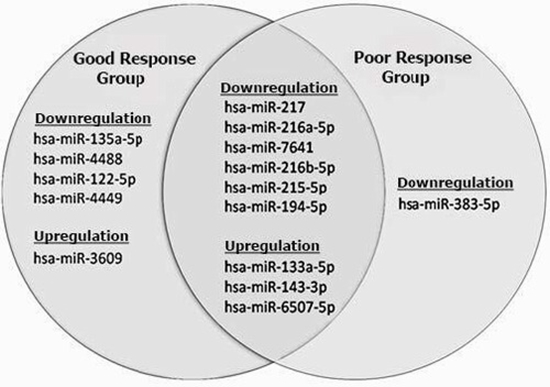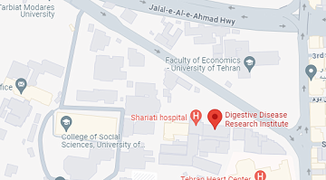Identification of differentially expressed microRNAs in primary esophageal achalasia by next-generation sequencing
Molecular knowledge regarding the primary esophageal achalasia is essential for the early diagnosis and treatment of this neurodegenerative motility disorder. Therefore, there is a need to find the main microRNAs (miRNAs) contributing to the mechanisms of achalasia. This study was conducted to determine some patterns of deregulated miRNAs in achalasia.

Molecular knowledge regarding the primary esophageal achalasia is essential for the early diagnosis and treatment of this neurodegenerative motility disorder. Therefore, there is a need to find the main microRNAs (miRNAs) contributing to the mechanisms of achalasia. This study was conducted to determine some patterns of deregulated miRNAs in achalasia. This case-control study was performed on 52 patients with achalasia and 50 nonachalasia controls. The miRNA expression profiling was conducted on the esophageal tissue samples using the next-generation sequencing (NGS). Differential expression of miRNAs was analyzed by the edgeR software. The selected dysregulated miRNAs were additionally confirmed using the quantitative reverse transcription polymerase chain reaction (qRT-PCR). Fifteen miRNAs were identified that were significantly altered in the tissues of the patients with achalasia. Among them, three miRNAs including miR-133a-5p, miR-143-3p, and miR-6507-5p were upregulated. Also, six miRNAs including miR-215-5p, miR-216a-5p, miR-216b-5p, miR-217, miR-7641 and miR-194-5p were downregulated significantly. The predicted targets for the dysregulated miRNAs showed significant disease-associated pathways like neuronal cell apoptosis, neuromuscular balance, nerve growth factor signaling, and immune response regulation. Further analysis using qRT-PCR showed significant down-regulation of hsa-miR-217 (p-value = 0.004) in achalasia tissue. Our results may serve as a basis for more future functional studies to investigate the role of candidate miRNAs in the etiology of achalasia and their application in the diagnosis and probably treatment of the disease.





ارسال نظر